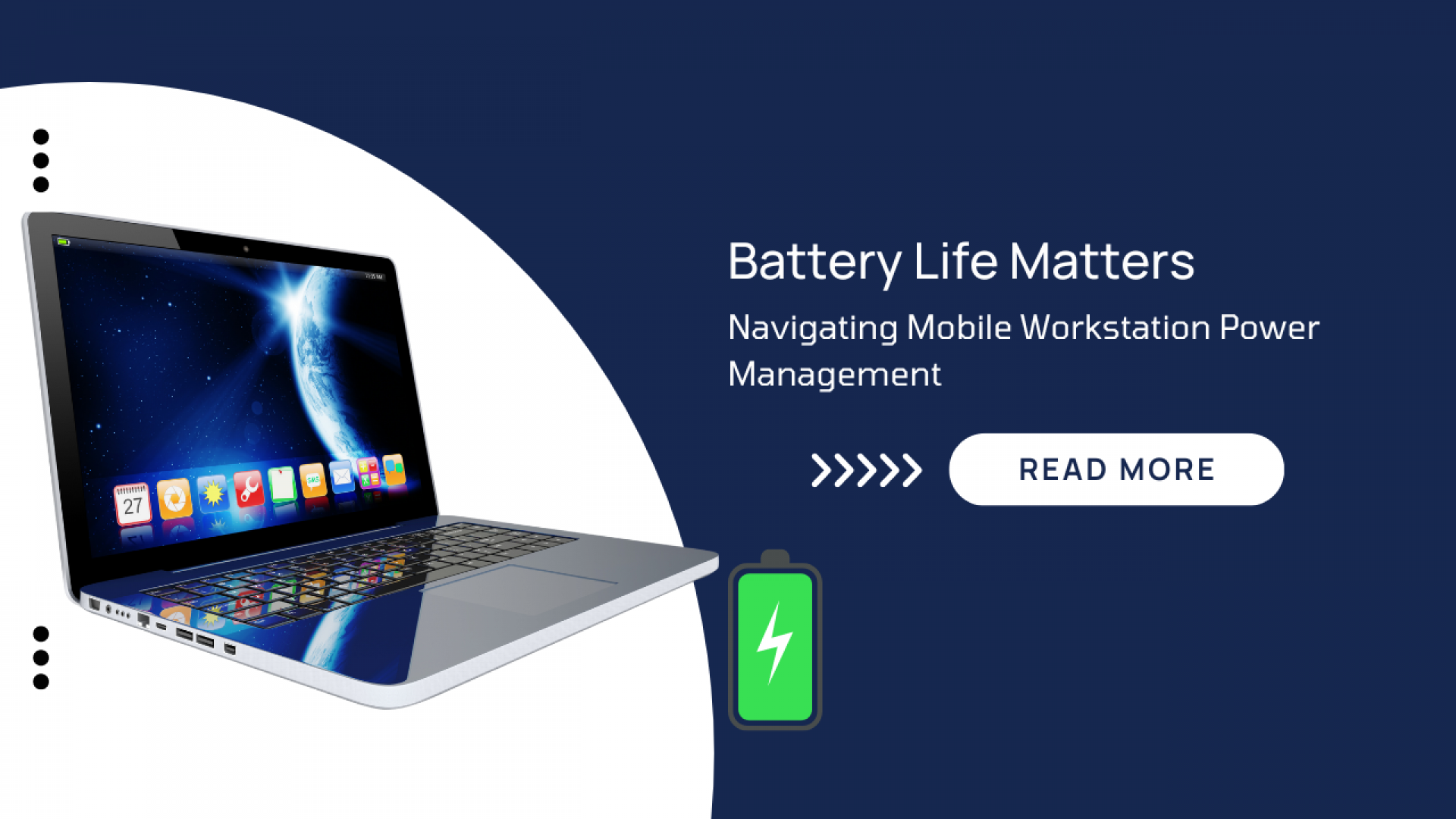
In today's fast-paced world, mobile workstations have become indispensable tools for professionals seeking productivity on the go. Whether you're a digital nomad, a freelance designer, or a business executive, the ability to work efficiently while untethered from a traditional office setting is invaluable. However, one crucial aspect that can make or break the mobile workstation experience is battery life. In this comprehensive guide, we'll delve into the intricacies of mobile workstation power management, exploring tips and strategies to optimize battery life and enhance productivity.
Understanding Battery Life Basics
Understanding battery life fundamentals is crucial before exploring power management strategies. Batteries naturally degrade over time due to usage, temperature variations, and charging behaviors. This degradation gradually reduces battery capacity, resulting in shorter runtimes between charges. Additionally, various factors impact battery consumption, including screen brightness levels, CPU utilization, background application activity, and connectivity preferences. By comprehending these basics, users can better appreciate the intricacies of managing their mobile workstation's power effectively, prolonging battery lifespan and optimizing device performance for extended periods of use.
Monitor Power-Hungry Applications
The initial step in effective power management involves identifying and monitoring power-hungry applications. Utilize tools such as Task Manager or Activity Monitor to pinpoint processes that heavily utilize CPU resources. By closing unnecessary applications or background processes, you can minimize overall power consumption and prolong battery life. This proactive approach ensures that your mobile workstation operates efficiently, maximizing productivity while optimizing battery usage for extended periods of use.
Optimize System Settings
Optimizing system settings plays a crucial role in extending battery life. Lowering screen brightness, deactivating unused features like Bluetooth and Wi-Fi, and activating power-saving modes are effective methods to conserve battery power. Additionally, configuring sleep and hibernation settings to activate after periods of inactivity reduces power consumption during idle intervals. By implementing these adjustments, users can significantly prolong their mobile workstation's battery life, ensuring uninterrupted productivity and minimizing the need for frequent recharging. These simple yet impactful changes empower users to strike a balance between performance and power efficiency, optimizing their computing experience while on the go.
Update Drivers and Firmware
Regularly updating device drivers and firmware can improve system stability and optimize power management algorithms. Manufacturers often release updates to address performance issues and enhance power efficiency. Checking for and installing available updates ensures that your mobile workstation operates at its optimal efficiency, maximizing battery life in the process.
Utilize Battery Saver Modes
Most operating systems offer battery saver modes designed to extend battery life by limiting background activities and reducing system performance. Enabling these modes automatically adjusts system settings to conserve power when the battery level reaches a predefined threshold. Customizable power plans allow users to tailor settings according to their preferences and usage patterns.
Employ External Battery Packs
For users who require extended battery life beyond the capabilities of built-in batteries, external battery packs provide a convenient solution. These portable power banks connect to the mobile workstation via USB or other compatible ports, offering additional runtime when working remotely or traveling. Investing in a high-capacity external battery pack ensures uninterrupted productivity, even in situations where access to power outlets is limited.
Manage Background Processes and Updates
Background processes, automatic updates, and cloud synchronization services can drain battery life, especially when operating on battery power. Reviewing and managing background processes and disabling automatic updates when working on battery power can help conserve energy. Schedule updates and synchronization tasks for times when the mobile workstation is connected to a power source to minimize impact on battery life.
Monitor Battery Health
Regularly monitoring battery health is essential for maintaining optimal performance and longevity. Many operating systems provide built-in tools or third-party applications for monitoring battery health and estimating remaining capacity. Pay attention to warning signs such as sudden drops in battery life or unusual behavior, which may indicate battery degradation or malfunction.
Practice Proper Charging Habits
Adopting proper charging habits is crucial for prolonging battery lifespan and preserving overall health. Avoid frequent full discharges and charges, as this can accelerate battery degradation. Instead, aim for shallow discharges and partial charges whenever possible. Additionally, using the original charger and avoiding exposure to extreme temperatures during charging helps maintain battery health.
Conclusion
Battery life management is a critical aspect of mobile workstation usage, impacting productivity and user experience significantly. By implementing the strategies outlined in this guide, users can optimize battery life, prolong battery health, and maximize productivity on the go. From monitoring power-hungry applications to practicing proper charging habits, every effort to conserve battery power contributes to a seamless mobile workstation experience. Embracing efficient power management practices ensures that your mobile workstation remains a reliable and productive tool for accomplishing tasks wherever you go.

Leave a Comment